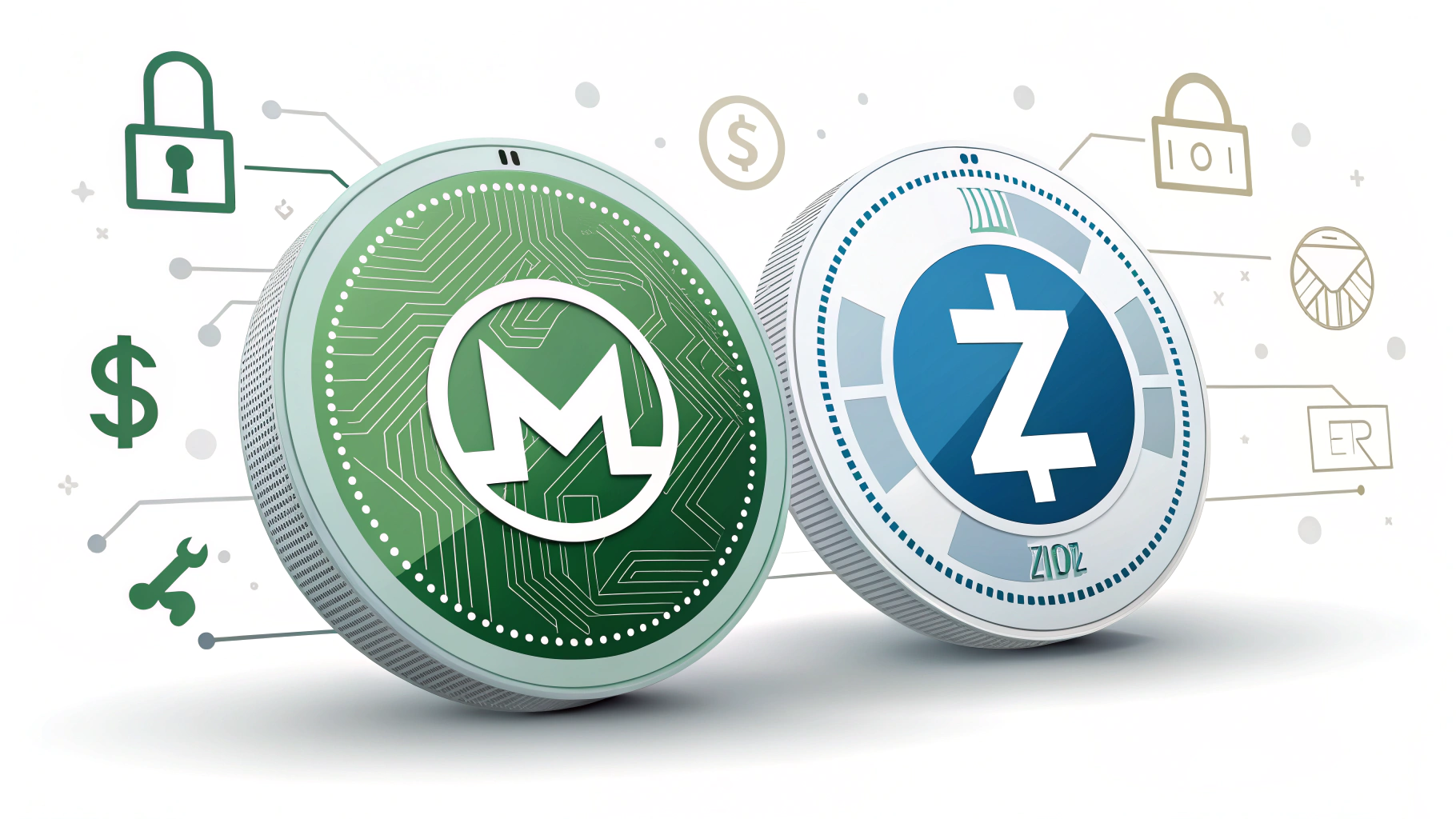Monero vs Zcash: Analysis of Privacy-Centric Cryptocurrencies
Introduction
As the cryptocurrency market evolves, privacy-centric coins like Monero (XMR) and Zcash (ZEC) have gained significant traction. These cryptocurrencies prioritize anonymity and privacy, offering users a secure way to conduct transactions without exposing sensitive information. With the anticipated 2025 crypto bull run, the debate over which privacy coin Monero or Zcash is better suited for securing investments and capitalizing on market opportunities has intensified. This report provides an in-depth comparison of Monero and Zcash, analyzing their privacy features, technical specifications, market performance, and investment potential.
Overview of Monero and Zcash
Monero (XMR)
Monero was launched in 2014 and is widely regarded as one of the most privacy-focused cryptocurrencies. It operates on its own blockchain and employs advanced cryptographic techniques to ensure complete anonymity. Monero’s privacy features include ring signatures, stealth addresses, and Ring Confidential Transactions (RingCT), which obfuscate transaction details such as sender, receiver, and transaction amount.
Monero’s community-driven governance model and decentralized development team contribute to its resilience and adaptability. The cryptocurrency uses the RandomX proof-of-work (PoW) algorithm, which is ASIC-resistant, making it accessible to individual miners using standard hardware.
Zcash (ZEC)
Zcash, introduced in 2016, offers a unique approach to privacy by allowing users to choose between transparent and shielded transactions. It employs zk-SNARKs (Zero-Knowledge Succinct Non-Interactive Arguments of Knowledge), a cutting-edge cryptographic method that enables private transactions without revealing any details.
Unlike Monero, Zcash is backed by the Electric Coin Company, which oversees its development. It uses the Equihash proof-of-work algorithm, designed to be memory-intensive, thereby promoting decentralization by discouraging ASIC mining.
Privacy Features
Monero: Default Privacy
Monero’s blockchain is designed to make all transactions private by default. Its ring signatures mix a user’s transaction with others, making it impossible to trace the sender. Stealth addresses ensure that the recipient’s identity remains hidden, while RingCT conceals the transaction amount.
This default privacy model makes Monero particularly appealing to users who prioritize confidentiality. However, its complete anonymity has also attracted scrutiny from regulators and associations with illicit activities.
Zcash: Optional Privacy
Zcash offers a more flexible approach to privacy. Users can choose between transparent transactions, which are publicly visible on the blockchain, and shielded transactions, which use zk-SNARKs to hide transaction details. This selective privacy feature makes Zcash more compliant with regulatory standards, as it allows for optional transparency.
While Zcash’s privacy technology is highly advanced, its adoption of optional privacy has led to fewer shielded transactions in practice. As of recent data, only a small percentage of Zcash transactions are fully shielded.
Technical Specifications
| Feature | Monero (XMR) | Zcash (ZEC) |
|---|---|---|
| Launch Year | 2014 | 2016 |
| Privacy Mechanism | Ring Signatures, Stealth Addresses, RingCT | zk-SNARKs |
| Transaction Privacy | Default (All private) | Optional (Public or private) |
| Mining Algorithm | RandomX (ASIC-resistant) | Equihash (Memory-intensive) |
| Block Time | 2 minutes | 2.5 minutes |
| Maximum Supply | Unlimited | 21 million |
| Governance Model | Decentralized, Community-driven | Centralized, Electric Coin Company |
Market Performance and Adoption
Monero
Monero has a strong track record of market performance. As of late 2024, Monero was trading at approximately $195, with predictions suggesting it could surge over 160% to reach $519 by 2025. Its consistent focus on privacy has made it a popular choice for darknet markets, ransomware payments, and online gambling.
Monero’s unlimited supply model ensures that mining rewards do not diminish over time, maintaining its appeal to miners. However, this could lead to inflationary concerns in the long term.
Zcash
Zcash has a capped supply of 21 million coins, similar to Bitcoin, which could make it a more attractive store of value. As of late 2024, Zcash was trading at approximately $30.12, with a market capitalization of $491.77 million.
Zcash’s selective privacy model has facilitated its adoption among businesses and individuals seeking regulatory compliance. However, its centralized governance and reliance on venture capital funding have raised concerns about potential centralization.
Investment Potential
Monero: A Privacy Powerhouse
Monero’s robust privacy features and community-driven development make it a resilient and battle-tested cryptocurrency. Its projected price growth and widespread adoption in privacy-focused use cases position it as a strong investment for 2025. However, its association with illicit activities and regulatory challenges could pose risks.
Zcash: Balancing Privacy and Compliance
Zcash’s optional privacy and capped supply make it a versatile cryptocurrency with potential for mainstream adoption. Its focus on cryptographic innovation and regulatory compliance could attract institutional investors. However, its lower adoption rate for shielded transactions and centralized governance may limit its appeal.
Conclusion
Both Monero and Zcash offer unique advantages and challenges, making them suitable for different types of investors. Monero excels in providing default privacy and a decentralized governance model, making it ideal for users seeking maximum anonymity. On the other hand, Zcash’s selective privacy and regulatory compliance make it a more flexible option for businesses and individuals.
For investors prioritizing privacy and anonymity, Monero is the clear choice. However, those seeking a balance between privacy and mainstream adoption may find Zcash more appealing. Ultimately, the decision depends on individual preferences, risk tolerance, and investment goals.
Share this content:
